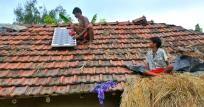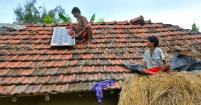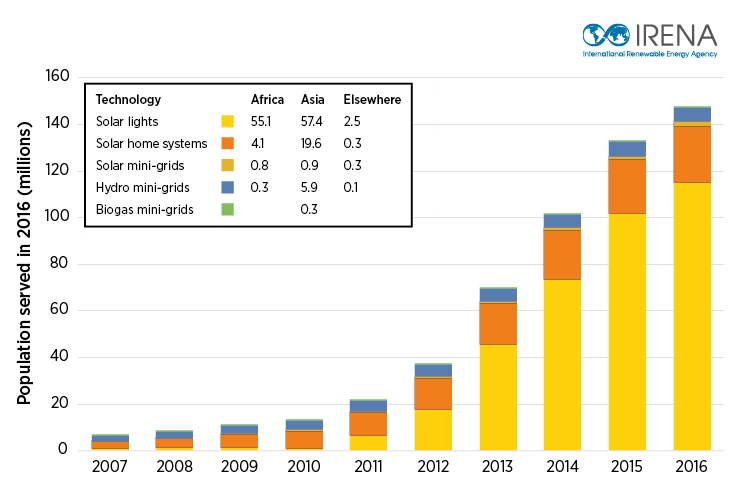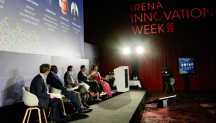

New Estimates Show Rapid Growth in Off-Grid Renewables
Newsletter
Photo: Biswaji Patra
New data from IRENA shows that about 115 million people worldwide currently rely on the basic energy services provided by solar lights, while another 25 million obtain a higher level of renewable energy services through solar home systems or connection to a solar mini-grid. In addition to solar power, over 6 million people are currently connected to hydropower mini-grids, while another 300,000 people use biogas power.
The supply of electricity from mini-grids and small solar devices, such as solar home systems and solar lights is growing especially fast. This part of the energy sector, including power generation from these sources, is often missing from official energy statistics. But evidence of their growing importance can be seen in solar panel import statistics and development project databases.
During 2017, IRENA collected detailed data about off-grid power developments to determine current estimates of off-grid capacity. Data sources included biannual market surveys from the Global Off-Grid Lighting Association, the OECD-DAC development project database, national and regional power plant databases, off-grid data gathered via IRENA questionnaires, and information obtained from organisations such as REN21 and the Alliance for Rural Electrification.

Worldwide, the number of off-grid renewable energy users is growing.
Sample data collected from these sources included information about 180,000 off-grid solar power plants and 650 records of annual sales of solar devices around the world. Together, these accounted for almost half of the off-grid solar photovoltaic capacity currently estimated by IRENA, based on import statistics. In addition, the exercise also obtained information about 40,000 off-grid hydropower plants and 100 off-grid biogas power plants, as well as records of the construction of almost 42 million biogas digesters reaching as far back as the 1980s.
The data was processed to account for such factors as the durability of solar systems and the different end-uses of power plants. An important part of this was to convert reported connection or use statistics into a standard measure of the number of people served by each type of plant. This was done to avoid overestimation – when, for example, a report says that a village has been electrified, but only some residents are actually connected to the power supply.
Almost all of the growth in the use of off-grid power has occurred in the last five years — largely driven by the increased availability and affordability of small solar devices, such as solar lights and lighting kits. These devices only provide lighting and low-power charging (e.g. for mobile phones) and do not provide a comprehensive range of energy services. However, only about 10% of the population served in Africa obtains the higher level of services associated with solar home systems and mini-grids, whereas in Asia the share is over 30%.
To see the latest figures in global renewable energy capacity, see Renewable Capacity Statistics 2018.




